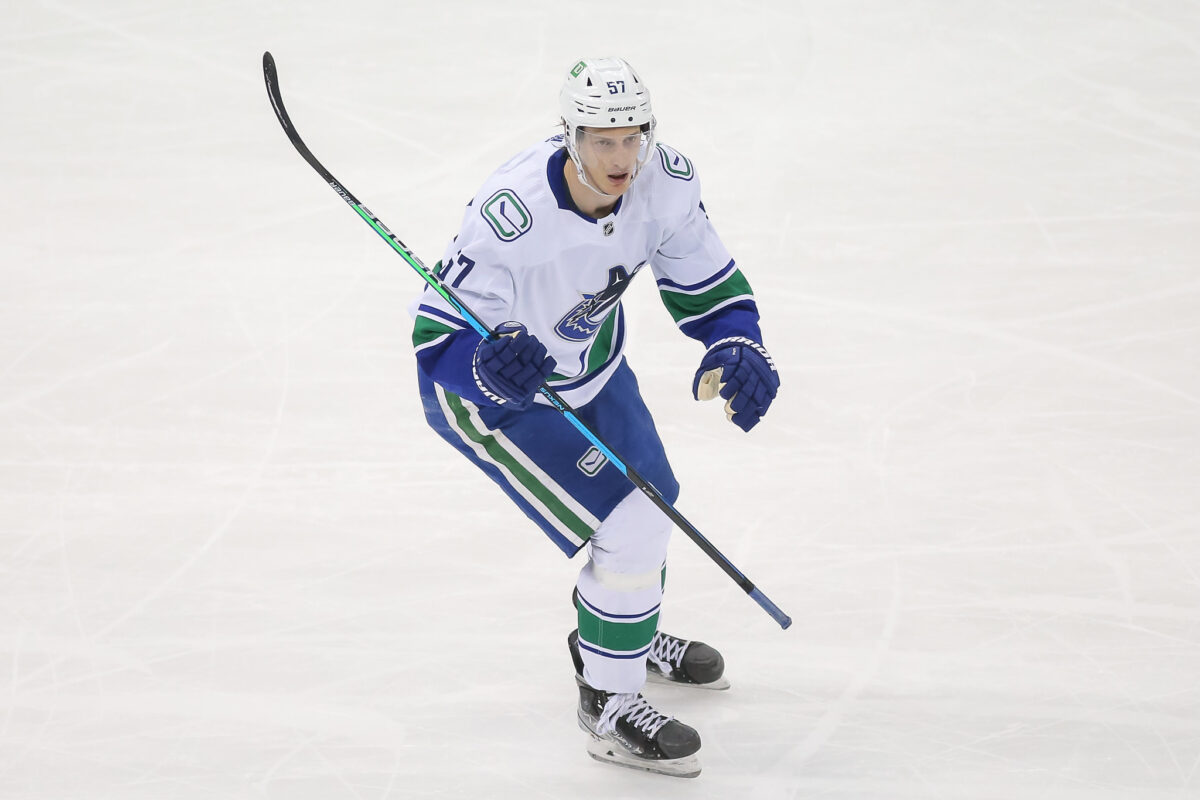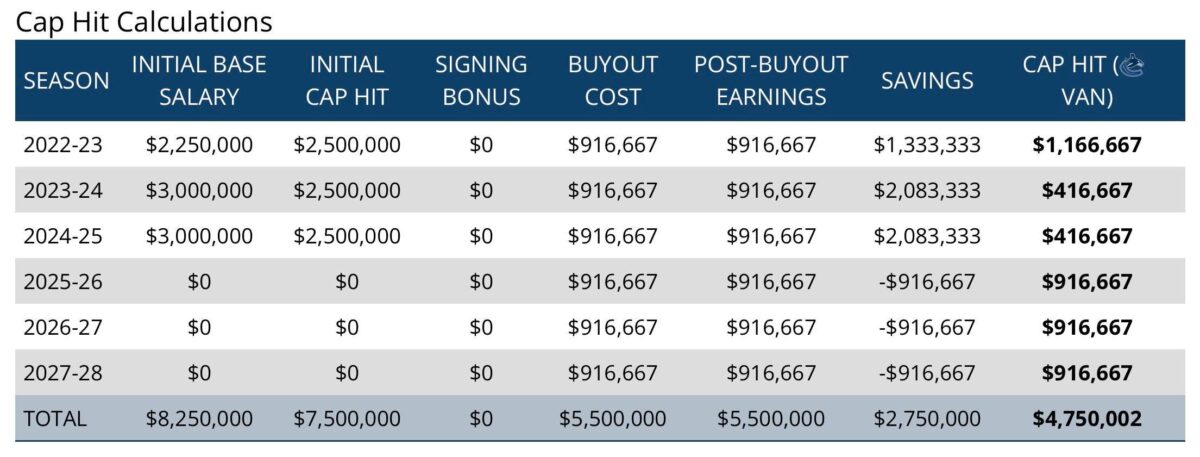From roughly the halfway point of the 2021-22 regular season, J.T. Miller’s name had been floating around in trade rumours along with potential suitors for his services. It was even more of a conversation after the Vancouver Canucks extended sniper Brock Boeser to a three-year extension earlier this offseason. However, despite all the circumstances and the significant raise Miller should get on his next deal, the Canucks have salary cap options to extend him long-term.
Miller is entering the final season of a five-year, $26.25 million contract with an average annual value (AAV) of $5.25 million. The salary cap will be working against the Canucks, as they currently sit $2.751 million over the limit. However, general manager Patrik Allvin along with Miller’s camp believe there is a route to keeping the star forward in Vancouver. His agent, Brian Bartlet even said there’s optimism for an extension, according to The Athletic’s Harman Dayal.
“I do think there’s a realistic path for an extension with the Canucks. J.T. loves it in Vancouver. He feels like the team is improving, he loved his role there, his family likes the city” (from ‘J.T. Miller’s agent discusses Canucks future: ‘There’s a realistic path for an extension,’ The Athletic, 7/20/22).
How do the Canucks get to the point of an actual extension for Miller taking place? There are a few different options, from moving a big contract, to using a buyout to clear cap, along with dead cap coming off the books after the 2022-23 season.
Move Myers Or Ekman-Larsson
Trading away a large contract has become a common, and pricy bit of business around the NHL lately. The Canucks have a couple of defenders that fit that category. Tyler Myers has two years left on his deal at $6 million AAV, while Oliver Ekman-Larsson still has five years left with an AAV of $7.26 million. In saying that, being able to trade one of them would create more than enough space to extend Miller.

Of the two deals, Myers would be the easier of the two to move. The 6-foot-8 defenseman may not put up the offensive numbers from his earlier days, but he can still fit into a top-four role and is a right-shot, which has come to be quite the coveted position. This past season, he collected 18 points across 82 games, playing 21:59 time on ice (TOI) per game. On more of the defensive side, he recorded 148 blocks and while the stat has its flaws, was a plus-15 on the season.
Related: Canucks Should Avoid Getting Into the Tkachuk Sweepstakes
Ekman-Larsson on the other hand, while not the player he once was with the Arizona Coyotes, still put up 29 points in 79 games, averaging 22:19 TOI per game while anchoring the team’s second power-play unit. If the Canucks were willing to retain salary on his deal, as the Coyotes did for them, it might make it a bit more palatable for a team to take him on, seeing how he’s under contract until 2026-27. There isn’t anything out there suggesting either player will be moved, but it would make extending Miller a much easier task.
Canucks Have Potential Players to Buy Out
Buying out someone often means the contract or player themselves didn’t quite work out. Every team has dealt with this at one point or another. With the Canucks currently being more than $2 million over the cap, they have a couple of potential buyout candidates to give the organization some breathing room, Jason Dickinson and Tucker Poolman.
Dickinson’s first season in Vancouver did not go according to plan after signing a 3-year, $7.95 million deal last summer. Brought in to be the Canucks’ third-line centre, he finished with just 11 points in 62 games. His face-off percentage (F%), was also well below 50 percent, winning just 42.6 percent of his draws, while his Corsi For percentage (CF%), was 47.9. With the potential of running Elias Pettersson, Miller and Bo Horvat up the middle, and Curtis Lazar assuming fourth-line duties, there might not be a spot for Dickinson regardless. The buyout would count for $941,667 on the cap in the first season, $391,667 in 2023-24, and $991,667 between 2024-2026, with Dickinson owed $2.7 million this season, and $3.25 million in total dollars in 2023-24. Overall, it would save Vancouver $1,708,333 against the cap this coming season, and $2,258,333 in 2023-24.

Poolman is in a similar situation as Dickinson. as the top-four on defence looks to consist of Quinn Hughes, Luke Schenn, Ekman-Larsson and Myers, while Travis Dermott and potential youngster Jack Rathbone attempting to stay in the NHL this season as a cheap option for the bottom pairing. While it’s not for sure, Poolman has three years remaining on a four-year contract, with a cap hit of $2.5 million. A buyout would save Vancouver $1,333,333 in year one, and $2.038 million for the next two while accounting for $916,667 against the cap from 2025 to 2028.

While it may prove to be an issue in future years, if the Canucks are looking for immediate help, the buyout route might be the way to go.
Dead Cap Coming Off the Books
The dead cap penalty in a buyout can be a burden for years on an organization, but when they end it’s like finding a little extra cash in the pocket of an old jacket. For the Canucks, they’ll have two separate deals ending soon, taking some money off the books at the end of this coming season.
The first is former Canucks goaltender Braden Holtby, who was bought out in June of last year and is still currently on the books for $1.9 million. The other is former right winger Jake Virtanen, who was bought out a day earlier and is owed $500,000 this year as well. An extra $2.4 million may not seem like a ton of extra room, but that alone might be enough to extend Miller to the dollar amount he’ll be looking for.
Even if Miller does re-sign, there are still many other players who will be in need of contracts, including captain Bo Horvat, Nils Hoglander, Andri Kuzmenko and Travis Dermott. Whatever decision is made, there is plenty of work to do for Allvin and company before the puck drops in October.
